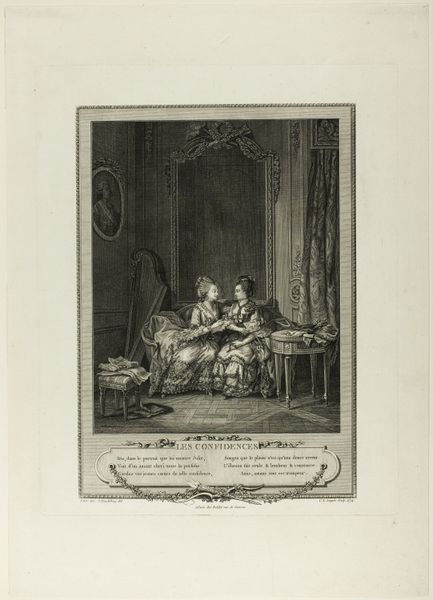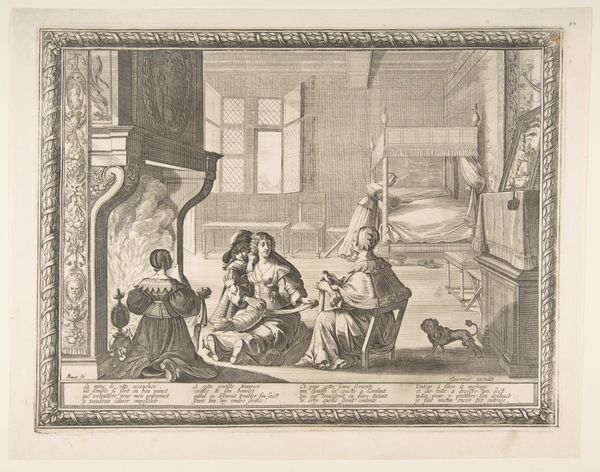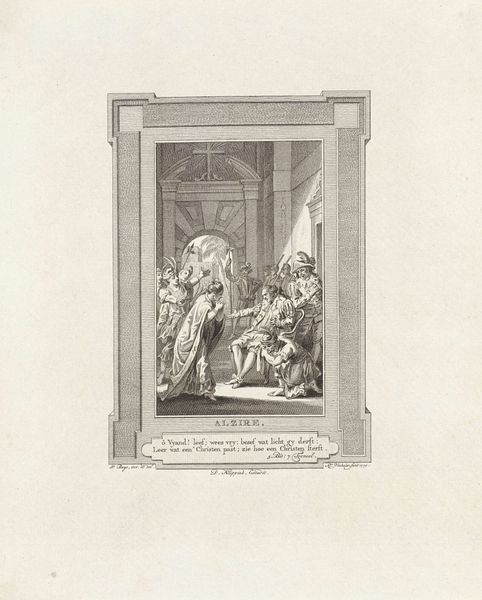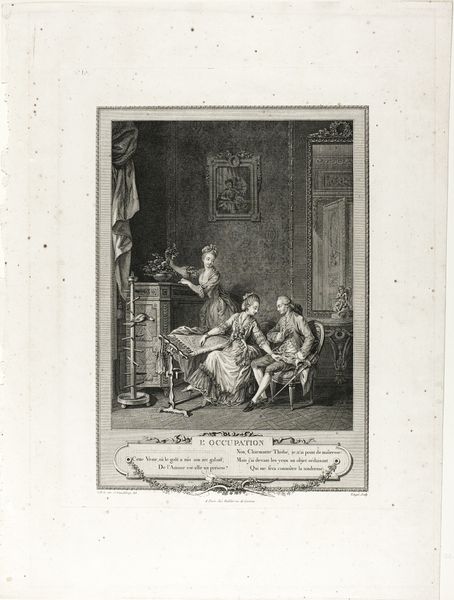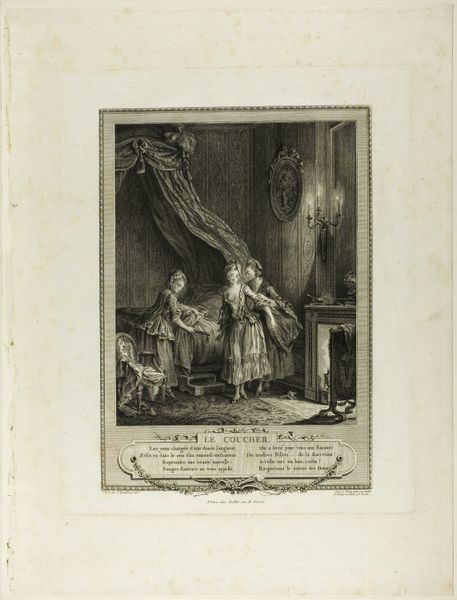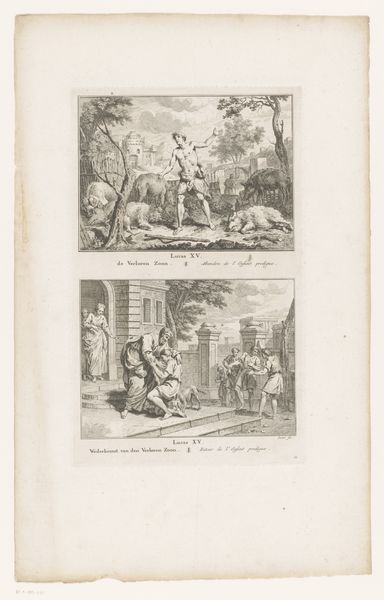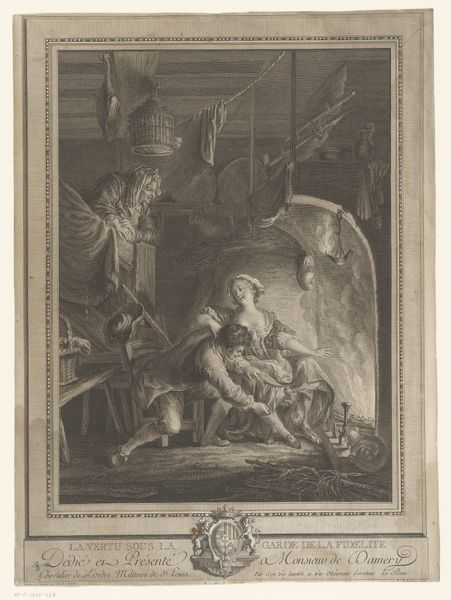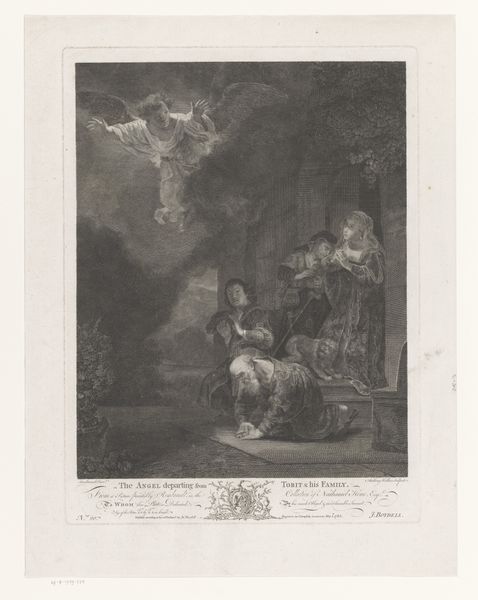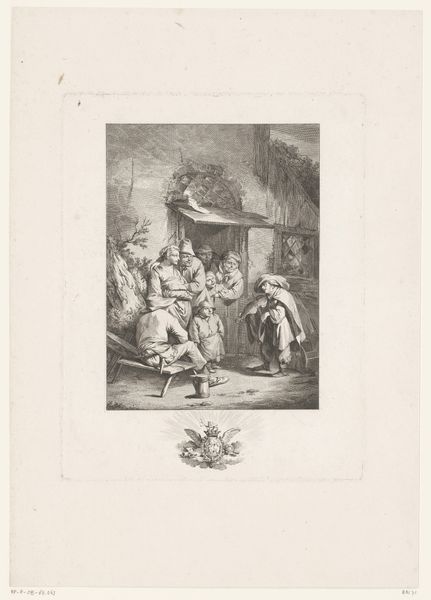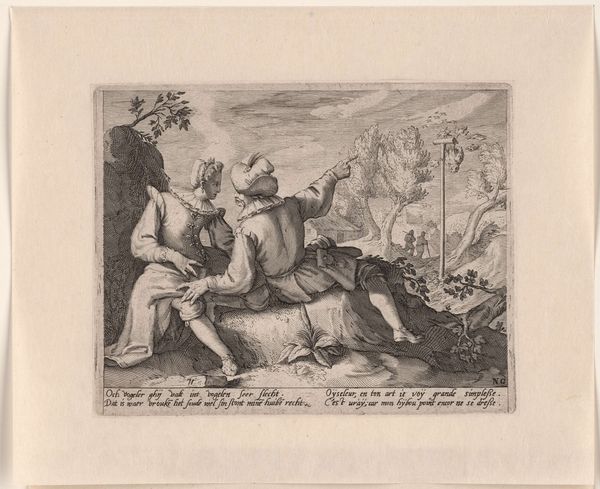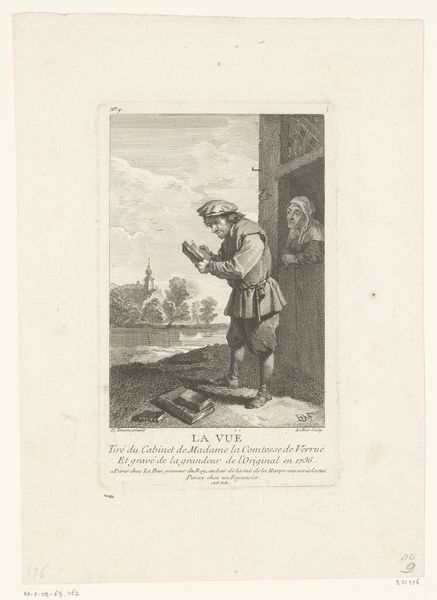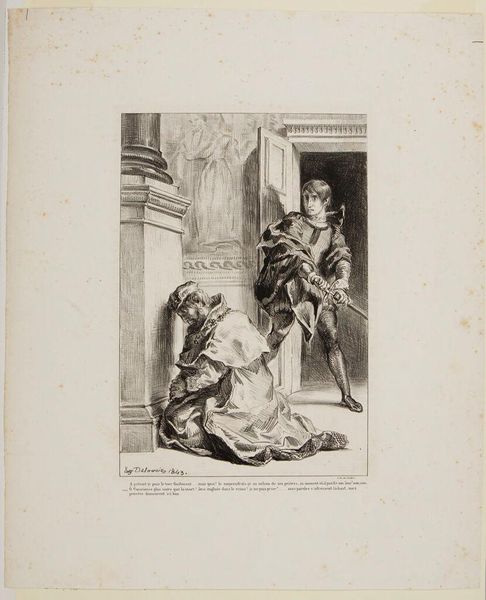
Allegorie op het behoud van de vrijheid tegenover de Franse vijand, 1793 1794
0:00
0:00
print, engraving
#
neoclacissism
#
aged paper
#
toned paper
#
allegory
#
dutch-golden-age
# print
#
old engraving style
#
old-timey
#
geometric
#
19th century
#
history-painting
#
engraving
Dimensions: height 410 mm, width 440 mm
Copyright: Rijks Museum: Open Domain
Curator: George Kockers created this engraving titled, "Allegory on the preservation of freedom against the French enemy, 1793," actually made in 1794. What strikes you initially about it? Editor: The stark contrast! The clear lines on the left with what looks like deliberate chaos engulfing the right. I'm immediately drawn to the figure with the long staff, she seems to push back the darkness. What can you tell me about its making? Curator: Well, prints like these served a vital purpose beyond pure aesthetics. As a readily reproducible medium, engravings democratized images and ideals. Note the female figures embodying 'Freedom' and 'Religion,' symbols of Dutch identity in this time of political turmoil. This print reveals anxieties tied to national sovereignty. How does the use of allegory shape the work? Editor: Absolutely. The act of engraving, line by careful line, transforms readily available material—the copperplate, the ink—into potent propaganda. And those lines, combined with the toning of the paper, create depth, visually representing layers of conflict and resilience. It gives material form to abstract political ideals. But is its success contingent on how convincingly those figures portray their assigned roles? Curator: To a large extent, yes, especially then. The iconography taps directly into contemporary fears of revolution. But Kockers also constructs a historical narrative, linking Dutch freedoms with their foundational Protestant values represented in this print, thereby uniting history with contemporary experience. What impact do you feel the choice of this specific process makes on that message? Editor: The very *labor* inherent in the engraving strengthens that message of resilience. This isn't some quick sketch; this is an intense, physically demanding process, a material embodiment of resisting oppression. It encourages its audience to consider all of those people it shows taking action, in real-time. The physical print carries an energy related to these anxieties. Curator: Precisely. Looking at the print this way underscores how material and context intertwine. Editor: I agree. Understanding the labor, the distribution networks, even the paper itself lets us really see how this image operated in the late 18th century.
Comments
No comments
Be the first to comment and join the conversation on the ultimate creative platform.

